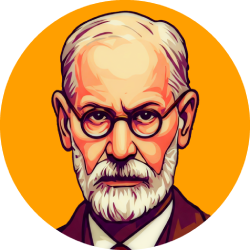Hello, I am the psychoanalyst João Barros, and today we will explore one of the most fascinating concepts of psychoanalysis: the structural model proposed by Sigmund Freud in 1923. In this article, let’s dive into the world of ego and ID, two fundamental components of human personality. Let’s understand how they interact and influence our behavior in everyday life.
Introduction to the structural model
Freud’s structural model is a theory that divides personality into three parts: ID, ego and the superego. ID is responsible for our primitive instincts and desires, while the ego acts as a mediator between ID and external reality. Already the superego represents our moral and ethical conscience.
This theory was presented in 1923 in the book “The Ego and the ID”, and marked a great change in the way Freud understood the human personality. Before that, he had focused more on traumatic memories and the importance of childhood in personality formation.
The ID: the instinctual component
ID is the most primitive part of our personality. He is responsible for our instincts, desires and basic needs, such as hunger, thirst and sex. ID has no consideration for the external reality or the consequences of our actions.
Imagine that you are in a situation where your stomach is spending hungry. Your ID is saying, “Eat something now, no matter what it is!” But, of course, you can’t just eat anything anywhere. This is where the ego comes in.
The ego: the mediator
The ego is the part of the personality that acts as a mediator between id and external reality. He is responsible for helping us deal with the demands of the world around us while also trying to satisfy the desires of ID.
Vollowing to the previous example, your ego can say, “Okay, I’m hungry, but I can’t eat here in the middle of the street. I’m going to a restaurant or home to eat something decent.” The ego is like a manager who tries to maintain peace between the different parts of the personality.
Conflicts and challenges
The interaction between ID and ego is not always easy. Often, these two components conflict, leading to tensions and challenges to us. For example, if you are trying to lose weight, your ID may be saying, “Eat this delicious cake, you deserve it!” But your ego must intervene and say, “No, it’s not a good idea, think about the consequences for your health.”
These conflicts are normal and are part of the process of growth and personal development. The key is to learn to manage these tensions in a healthy way, allowing the ego to do its mediator work effectively.
Application in everyday life
Understanding Freud’s structural model can be very useful in our daily lives. By recognizing how ID and ego interact, we can develop strategies to deal with challenges and make more informed decisions.
For example, if you are having difficulty controlling your temperament, it may be helpful to identify when your ID is dominating the situation. In this case, you can use breathing techniques or breaks to give your ego a chance to intervene and help you deal with the situation more constructively.
In short, the structural model proposed by Freud in 1923 offers us a powerful tool to better understand ourselves and our interactions with the world around us. By recognizing the role of id and ego, we can work toward greater balance and inner harmony.


